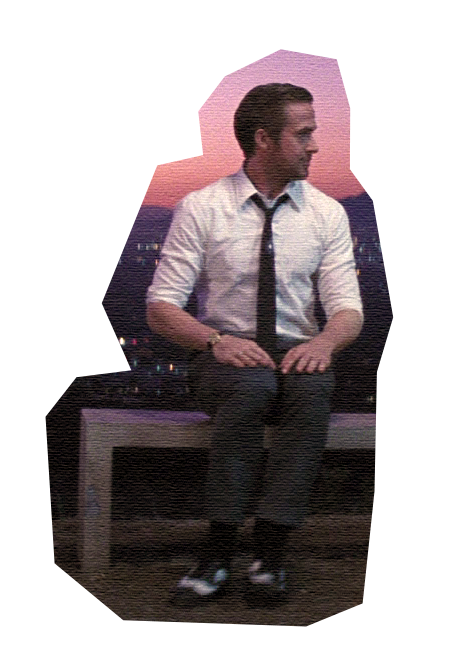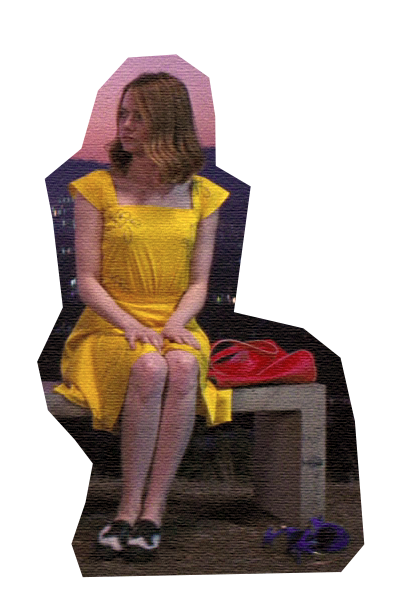
PRE
Damien Chazelle's La La Land reflects his passion for music and jazz, influenced by his own experiences as an aspiring filmmaker in Los Angeles. The film started as a screenplay he wrote in 2010 while still a student at Harvard, inspired by his love of old musicals but grounded in real-life struggles of artists chasing their dreams in the city. Initially conceived as a low-budget project set in Boston, it evolved into a Los Angeles story after Chazelle moved there.
Chazelle’s personal connection to jazz and the past, especially through the character of Sebastian, mirrors his own relationship with the genre. Despite the challenges of getting the film made (studios were initially uninterested in financing an original jazz musical), Chazelle’s success with Whiplash helped attract attention and funding for La La Land. The film's tone and style were influenced by classic musicals like The Umbrellas of Cherbourg and An American in Paris, but Chazelle also wanted to capture the unique qualities of L.A. with its sprawling traffic and skylines.
Ultimately, La La Land was made possible by Chazelle’s persistence and the success of Whiplash, which helped attract producers and secure a larger budget. The film blends Chazelle's personal journey with a love letter to classic musicals while addressing the real-life challenges of being an artist.
CASTING
La La Land had an interesting casting history. Emma Watson was originally set to star as Mia, but left to focus on Beauty and the Beast (2017), while Miles Teller dropped out after tough contract negotiations. This led to the casting of Ryan Gosling and Emma Stone, who had already shown great chemistry in Crazy, Stupid, Love and Gangster Squad. Chazelle saw them as the modern equivalents of classic Hollywood pairs like Fred Astaire and Ginger Rogers.
Both actors brought personal experiences to their roles: Stone drew from her own struggles as an aspiring actress, while Gosling's real-life audition frustrations were worked into the story. They both underwent intense training—Stone learned to dance, while Gosling learned to play the piano for the film (with no hand doubles).
Choreographer Mandy Moore emphasized emotion over technical perfection in the dance sequences, and Chazelle kept the creative spirit alive by screening classic musicals for the cast and crew. The result was a film that combined nostalgia for old Hollywood with a fresh take on modern dreams and romance.

FILMING
La La Land was shot with a specific old-Hollywood aesthetic in mind. Damien Chazelle wanted the musical numbers to be filmed "head to toe" in long takes, similar to classic Fred Astaire and Ginger Rogers musicals. He also aimed for the 1950s widescreen look of CinemaScope, using 4-perf Super 35mm film and anamorphic lenses to capture the wide 2.55:1 aspect ratio.
The film was primarily set in Los Angeles, a city Chazelle found poetically symbolic of people chasing unrealistic dreams. Filming took place in over 60 locations across the city, including iconic spots like the Griffith Observatory, the Watts Towers, and the Angels Flight trolley, which had been closed for years but was temporarily reopened for the film.
The opening number, filmed on a closed portion of the Judge Harry Pregerson Interchange, required over 100 dancers and was designed to give a sense of the vastness of L.A. Chazelle compared the scene to the yellow brick road in The Wizard of Oz.
One of the film’s most famous moments, the "A Lovely Night" sequence, took eight takes over two days to capture during the brief "magic hour" at sunset. While Gosling and Stone weren’t trained dancers, Chazelle was understanding of their mistakes, and the final take was met with an enthusiastic response from the crew. Gosling later reflected on his position in the iconic still from the scene, humorously calling it the "La La Hand." Chazelle also spent significant time refining the romantic dinner scene, working closely with Gosling and Stone to develop authentic dialogue for what he felt was one of the film’s most important and realistic moments. Finally, Chazelle and editor Tom Cross spent nearly a year fine-tuning the film, carefully balancing its whimsical tone with emotional depth.